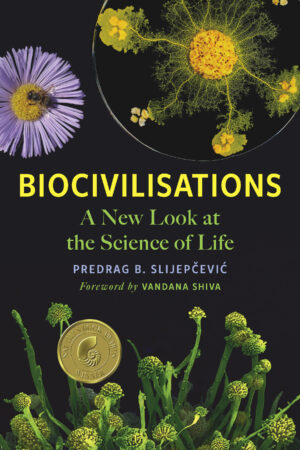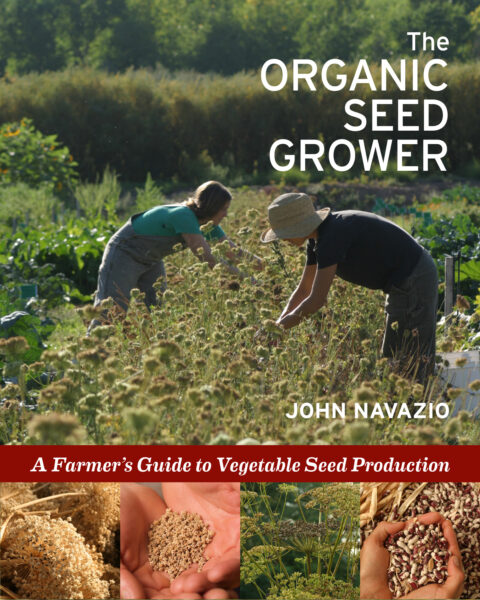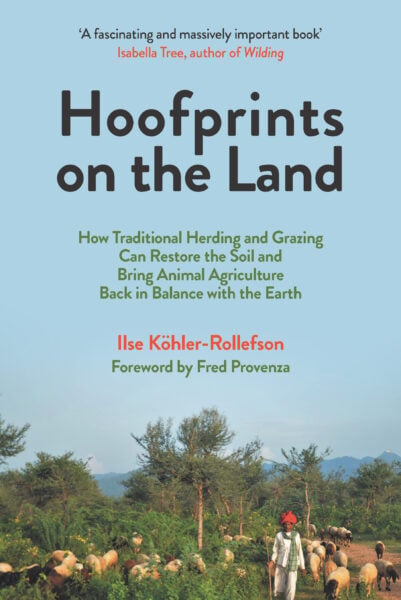A Brief History of Agriculture: The Science Behind Farming
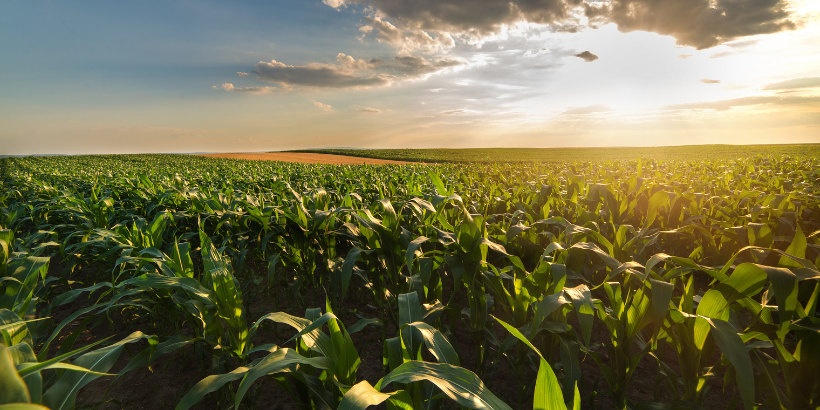
What do you think of when you think of the history of agriculture? Plants, vegetables, maybe some livestock? The basis of farming is actually much more complicated and intricate. Agricultural processes have been taking place right under our noses since the beginning of time — and they occur in the most unlikely and unexpected of places: inside our bodies.
The following is an excerpt from Biocivilisations: A New Look at the Science of Life by Dr. Predrag Slijepčević. It has been adapted for the web.
Scientists who investigate agriculture in the evolutionary context usually focus on social insects and humans. For example:
Insect fungiculture and human farming share the defining features of agriculture…: (a) habitual planting (‘inoculation’) of sessile (non- mobile) cultivars in particular habitats or on particular substrates, including the seeding of new gardens with crop propagules (seeds, cuttings, or inocula) that are selected by the farmers from mature (‘ripe’) gardens and transferred to novel gardens; (b) cultivation aimed at the improvement of growth conditions for the crop (e.g., manuring; regulation of temperature, moisture, or humidity), or protection of the crop against herbivores/fungivores, parasites, or diseases; (c) harvesting of the cultivar for food; and (d) obligate (in insects) or effectively obligate (in humans) nutritional dependency on the crop.15
The above description of agriculture is incomplete, however. To fully appreciate the history of agriculture in the evolutionary context, we have to identify missing elements. Let’s start with the most obvious one: human farming of livestock, otherwise known as animal husbandry.
Animal Husbandry: A Building Block of Agriculture
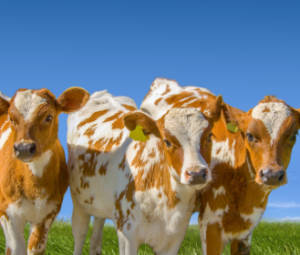 Animal husbandry includes the production of meat, dairy, eggs, wool and other products, and may include the rearing of cows, sheep, goats, pigs and poultry. There are also more obscure types of animal husbandry. For example, some animals are farmed only in certain places, including buffalos, alpacas and llamas. There are also farming practices that involve fish (aquaculture), insects such as honeybees (beekeeping) and small livestock such as rabbits and other rodents.
Animal husbandry includes the production of meat, dairy, eggs, wool and other products, and may include the rearing of cows, sheep, goats, pigs and poultry. There are also more obscure types of animal husbandry. For example, some animals are farmed only in certain places, including buffalos, alpacas and llamas. There are also farming practices that involve fish (aquaculture), insects such as honeybees (beekeeping) and small livestock such as rabbits and other rodents.
Many people were unaware that mink are farmed for fur until concerns about cross-species infection during the COVID-19 pandemic led authorities to call for the culling of Denmark’s entire mink population, a total of seventeen million animals.16 Other unusual farming practices include sericulture, or the production of silk, which is produced by the glands of larvae of lepidopteran insects, as well as both juvenile and adult spiders.
The commercial production of silk today largely relies on Bombyx mori, a domestic silk moth, also known as the Oriental Silkworm. Sometimes insects are farmed as food.17 For example, selling and eating edible insects is a common practice in Thailand. With the human population predicted to exceed nine billion by 2050, the replacement of standard livestock with ‘six-legged livestock’ as an alternative to meat production is well underway.18
Animal husbandry can also take place outside human culture
Animal husbandry can also take place outside human culture, such as the symbiotic relationship between ants and aphids.19 Ants act as herders and protectors of aphids – sap-sucking, soft-bodied insects, also known as ‘ant cows’ or greenfly and usually no bigger than a pinhead. Aphids live on vascular plants, where they suck the nutrient-rich phloem sap f rom the plant tissue. Ants, in turn, ‘milk’ aphids to release honeydew by stroking the end of the aphid’s alimentary tract using their antennae. The ants then transport the honeydew to their nests and regurgitate it for their nestmates.
For some ant species, aphid honeydew is the only source of food. Occasionally, ants supplement their diet by eating aphids, most likely when the aphid herd becomes too large. In return for the food, the ants protect the aphids from predators and even provide medical care. For example, ants actively search for a fungus that infects aphids and remove it from the aphids’ bodies.
The mutualistic relationship between ants and aphids is so strong that when young ant queens leave the nest to start a new colony, they will carry aphid eggs in their mouths to start a new herd. The strength of the mutualistic relationship is further illustrated by the farming skills developed by ants, and the confidence of aphids in their herders. For example, ants will secrete chemicals to drug aphids, thereby slowing their movements to prepare them for milking. For their part, the aphids will reduce their behavioural defence mechanisms.
Farming Outside of the Animal Kingdom
Farming practices also occur outside the Kingdom Animalia. In Chapter 5, I covered the symbiosis between the social amoeba Dictyostelium discoideum and bacteria from the genus Burkholderia. Depending on nutritional conditions, Dictyostelium discoideum live either as solitary or social creatures. When the bacteria that serve as food for amoeba are plentiful, Dictyostelium discoideum live as solitary creatures, dividing by binary fission, but when bacteria are scarce, the amoebas will congregate to form a multicellular fruiting body, with around 20% of cells sacrificing themselves to its formation. The remaining cells ascend the stalk, called a sorus, to the top and form a globule that will differentiate into spores.
Analysis of the spores has revealed that many of them carry bacteria. These spores are called ‘farmers’ because they can reseed the new source of food. Further analysis has revealed that bacteria are not passive partners in this farming symbiosis. Spores without bacteria (‘non-farmers’) will be colonised by Burkholderia to turn them into farmers.20
Finally, agriculture has also been discovered in the Kingdom Fungi. The soil fungus Morchella crassipes farms the bacterial species Pseudomonas putida by habitually planting the bacteria, feeding them on fungal exudates and harvesting them.21
Agriculture: An Evolutionary Phenomenon
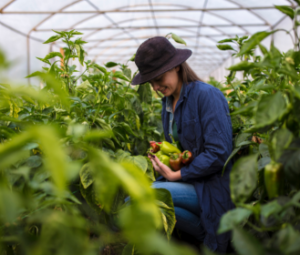 In other words, agriculture is an evolutionary phenomenon much older than insect fungiculture, which is often interpreted as the sole precursor to human agriculture. The origin of agriculture can be traced to the prokaryote–eukaryote evolutionary transition. As soon as the first eukaryotes emerged, they started mixing with bacteria and discovered that they could eat them. In Chapter 5 we learnt that protists are expert readers of bacterial VOCs and can graze bacterial fields in the form of biofilms (preferentially).
In other words, agriculture is an evolutionary phenomenon much older than insect fungiculture, which is often interpreted as the sole precursor to human agriculture. The origin of agriculture can be traced to the prokaryote–eukaryote evolutionary transition. As soon as the first eukaryotes emerged, they started mixing with bacteria and discovered that they could eat them. In Chapter 5 we learnt that protists are expert readers of bacterial VOCs and can graze bacterial fields in the form of biofilms (preferentially).
However, we have also seen that when entire local populations of bacteria are devoured, protists are forced, like social amoebas, to invent a new feeding technique: agriculture. The first farmers in the history of life were protists.
This revised history of agriculture, which pushes back its origin more than a billion years into the evolutionary past (from insect fungiculture to protists), has an extremely important implication. The key driver of agriculture is symbiosis. After the emergence of endosymbiosis as a major evolutionary transition roughly 1.5 billion years ago, symbiotic relationships between prokaryotic microbes and their eukaryotic counterparts exploded. The power of this symbiotic explosion catapulted agriculture, as a form of mutualistic symbiosis, far into the future. More than a billion years later, agriculture was discovered by social insects. Our hunter-gatherer ancestors unwittingly copied the actions of our agricultural predecessors in the long line of the evolutionary convergence that started with the protist–bacterial relationship.
Notes
15. Urlich G. Mueller et al., ‘The evolution of agriculture in insects,’ Annual Review of Ecology, Evolution, and Systematics 36 (2005): 564.
16. The BBC ran a story about this on 5 November 2020: https://www.bbc.co.uk/news/world -europe-54818615.
17. The Food and Agriculture Organization of the United Nations held a meeting in 2008 in Thailand dedicated to increasing insect consumption in South East Asia as a way of reducing meat consumption.
18. Yupa Hanboonsong, Tasanee Jamjanya and Patrick B. Durst, Six-Legged Livestock: Edible Insect Farming, Collection and Marketing in Thailand (Food and Agriculture Organization of the United Nations, Regional Office for Asia and the Pacific, 2013).
19. The following article provides an overview of the relationship between ants and aphids: Sumana Saha, Tanusri Das and Dinendra Raychaudhury, ‘Myrmecophilous association between ants and aphids – an overview,’ World News of Natural Sciences 20 (2018): 62–77.
20. Susanne DiSalvo et al., ‘Burkholderia bacteria infectiously induce the proto-farming symbiosis of Dictyostelium amoebae and food bacteria,’ Proceedings of the National Academy of Sciences, USA 112 (2015): E5029–E5037.
21. Martin Pion et al., ‘Bacterial farming by the fungus Morchella crassipes,’ Proceedings of the Royal Society B 280 (2013), https://doi.org/10.1098/rspb.2013.2242.
Recommended Reads
Recent Articles
Interested in growing trees? Here are some tips on successfully planting, transplanting, and pruning trees to create a flourishing forest garden! The following is an excerpt from The Home-Scale Forest Garden by Dani Baker. It has been adapted for the web. Planting Potted Trees and Shrubs If you order potted trees, check with your supplier to…
Read MoreChances are, you’ve seen cattails growing on the edge of your local lake or stream at least once or twice. Instead of just passing these plants, try foraging for and cooking them to create delicious seasonal dishes! The following excerpt is from The New Wildcrafted Cuisine by Pascal Baudar. It has been adapted for the…
Read MoreWith the right strategies and practices, composting on a small farm is surprisingly easy and inexpensive. Just follow these steps for making compost, and your farm will be thriving in no time! The following excerpt is from The Lean Farm Guide to Growing Vegetables by Ben Hartman. It has been adapted for the web. (All photographs by Ben…
Read MoreGarlic mustard: while known as “invasive,” this plant can be consumed in its entirety and has great nutritional value. Plus, the garlic-flavor is a perfect addition to any recipe that calls for mustard! The following are excerpts from Beyond the War on Invasive Species by Tao Orion and The Wild Wisdom of Weeds by Katrina…
Read MoreEveryone loves a refreshing, fermented, nutritious drink…even your garden! Take your fermentation skills out of the kitchen and into the garden by brewing fermented plant juice. The following is an excerpt from The Regenerative Grower’s Guide to Garden Amendments by Nigel Palmer. It has been adapted for the web. How to Make Fermented Plant Juice Fermented…
Read More

